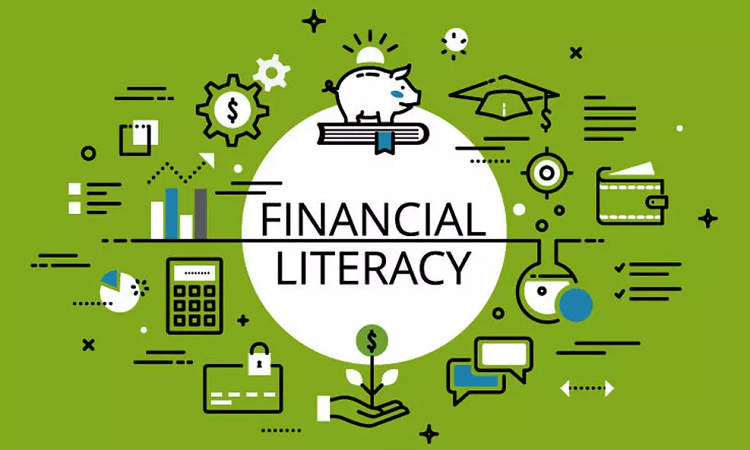Unraveling the Enigma of “Bloodclaat”: A Linguistic Journey into Jamaican Patois

Language is a fascinating tapestry woven with unique threads, each thread representing a cultural expression or historical context. In the vast landscape of linguistic diversity, Jamaican Patois stands out as a vibrant and expressive language. Within this rich tapestry lies a term that has intrigued and puzzled many – “bloodclaat.” This seemingly straightforward word carries layers of meaning, cultural significance, and historical roots. In this article, we embark on a linguistic journey to unravel the complexities and nuances behind the term “bloodclaat.”
The Origins of Jamaican Patois:
Before delving into the depths of “bloodclaat,” it’s crucial to understand the origins and evolution of Jamaican Patois. Also known as Jamaican Creole, Patois is a language born out of the historical and cultural amalgamation of African, European, and indigenous influences. It developed as a means of communication among the diverse population of Jamaica, reflecting the island’s complex history of colonization, slavery, and migration.
Jamaican Patois is a language of resistance and resilience, born out of the necessity for enslaved people to communicate in a way that was both expressive and secretive. Over time, it has evolved into a vibrant and distinct language that is deeply ingrained in Jamaican culture.
“Bloodclaat” – A Linguistic Enigma:
At first glance, the term “bloodclaat” may seem perplexing and perhaps offensive to those unfamiliar with Jamaican Patois. However, to truly grasp its meaning, one must delve into the linguistic nuances that characterize this unique language.
In Jamaican Patois, “bloodclaat” is considered a strong and explicit expletive. It is part of a group of words known as “bad words” or “taboo words,” which are used to convey intense emotions, emphasis, or even frustration. The term itself is a compound of “blood” and “claat,” with “blood” representing a strong expletive and “claat” translating to cloth or rag. The combination creates a vivid and potent expression.
Cultural Context and Usage:
Understanding the cultural context in which “bloodclaat” is used is essential to appreciating its significance. In Jamaican culture, language is a dynamic and living entity, deeply tied to the daily experiences, struggles, and triumphs of the people. “Bloodclaat” is employed in various situations, ranging from expressions of surprise or shock to more explicit displays of anger or frustration.
It is important to note that the usage of “bloodclaat” is context-dependent and can carry different levels of intensity. In some instances, it may be employed casually among friends, while in others, it may convey a more serious tone. The dynamic nature of Jamaican Patois allows for a range of interpretations, adding depth and complexity to the language.
Evolution and Global Influence:
As Jamaican culture has gained international recognition through music, particularly reggae and dancehall, certain elements of Jamaican Patois, including “bloodclaat,” have found their way into global popular culture. The influence of Jamaican artists such as Bob Marley, Beenie Man, and Vybz Kartel has contributed to the widespread use and recognition of certain Patois expressions.
However, it is crucial to approach the adoption of Jamaican Patois in global contexts with sensitivity, recognizing its cultural roots and the potential for misappropriation. The global spread of certain Jamaican expressions, including “bloodclaat,” highlights the power of language in transcending geographical boundaries and connecting people across cultures.
Cultural Sensitivity and Appropriation:
While the global popularity of Jamaican Patois is a testament to its richness and appeal, it is essential to approach its usage with cultural sensitivity. Language is deeply intertwined with identity, and the appropriation of expressions like “bloodclaat” without an understanding of their cultural significance can perpetuate stereotypes and contribute to cultural insensitivity.
To fully appreciate and use Jamaican Patois expressions, including “bloodclaat,” it is advisable to engage in a meaningful exploration of the language’s history, cultural context, and the experiences of the Jamaican people. This approach fosters a more nuanced understanding and promotes respectful cross-cultural communication.
Conclusion:
In unraveling the enigma of “bloodclaat,” we have embarked on a linguistic journey through the vibrant and expressive landscape of Jamaican Patois. This unique language, born out of a complex history and cultural fusion, carries with it the weight of centuries of resilience and resistance.
“Blooodclaat,” with its explicit and potent nature, serves as a testament to the dynamism and power of language in shaping cultural identity. It is a reminder that language is not just a means of communication but a living, breathing entity that reflects the richness of human experience.
As we navigate the global landscape of cultural exchange and communication, it is crucial to approach expressions like “bloodclaat” with respect, understanding, and a commitment to preserving the integrity of the cultures from which they originate. In doing so, we contribute to a more inclusive and interconnected world where language becomes a bridge rather than a barrier.
Q1: What does “bloodclaat” mean?
A1: In Jamaican Patois, “bloodclaat” is a strong expletive. It is a compound word formed by combining “blood,” representing a potent expletive, and “claat,” meaning cloth or rag. Together, it creates a vivid and explicit expression often used to convey intense emotions, emphasis, or frustration.
Q2: How is “bloodclaat” used in Jamaican Patois?
A2: The usage of “bloodclaat” is context-dependent and varies in intensity. It can be employed casually among friends to express surprise or shock, or it may convey a more serious tone when expressing anger or frustration. The dynamic nature of Jamaican Patois allows for diverse interpretations and applications.
Q3: What is the cultural context of “bloodclaat”?
A3: “Bloodclaat” is deeply rooted in Jamaican culture and reflects the island’s history of colonization, slavery, and resistance. It is part of a group of words known as “bad words” or “taboo words,” used to express strong emotions. Understanding the cultural context is crucial for appreciating the significance and nuances of this term.
Q4: How has “bloodclaat” been influenced by Jamaican music and culture?
A4: Jamaican music, especially reggae and dancehall, has played a significant role in popularizing Jamaican Patois expressions, including “bloodclaat.” Artists like Bob Marley, Beenie Man, and Vybz Kartel have contributed to the global recognition of these terms. However, it’s important to approach their usage with cultural sensitivity and avoid misappropriation.
Q5: Is the use of “bloodclaat” offensive?
A5: The offensiveness of “bloodclaat” depends on the cultural context and the relationship between individuals. In Jamaican Patois, it is a strong and explicit term, but its intensity can vary. It is essential to use such expressions with caution and awareness of their cultural implications, especially in global contexts.
Q6: Can “bloodclaat” be used in a positive context?
A6: While “bloodclaat” is often associated with strong emotions or frustration, in some instances, it can be used in a more neutral or even positive context among friends. However, it is crucial to be mindful of the potential for misinterpretation and to consider the cultural context in which it is used.
Q7: How can one approach the use of Jamaican Patois expressions like “bloodclaat” with cultural sensitivity?
A7: To use Jamaican Patois expressions respectfully, it is advisable to engage in a meaningful exploration of the language’s history, cultural context, and the experiences of the Jamaican people. Appreciating the richness and significance of these expressions fosters a more nuanced understanding and promotes respectful cross-cultural communication.
Q8: Is there a risk of cultural appropriation when using terms like “bloodclaat”?
A8: Yes, there is a risk of cultural appropriation if these expressions are used without an understanding of their cultural significance. It’s essential to approach Jamaican Patois with respect and avoid perpetuating stereotypes. Engaging in a thoughtful exploration of the language and its cultural roots can contribute to responsible and inclusive communication.
Q9: Can non-Jamaicans use “bloodclaat” without causing offense?
A9: While some Jamaicans may use Jamaican Patois expressions casually, it is crucial for non-Jamaicans to approach the use of terms like “bloodclaat” with caution. Understanding the cultural context and the potential for misinterpretation is vital to avoid causing unintended offense.
Q10: How has the global influence of Jamaican culture affected the use of “bloodclaat”?
A10: The global spread of Jamaican music and culture has led to the recognition and adoption of Jamaican Patois expressions, including “bloodclaat,” in various parts of the world. However, it is essential to appreciate these expressions within their cultural context and avoid diluting their meaning through misappropriation.





